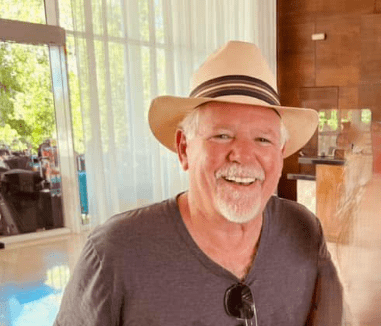Many people who knew Mark Stidham through his work in fashion, entrepreneurship, and the LuLaRoe brand he founded with his wife, DeAnne, have been shocked by his demise. One query kept coming up once the word got out: Mark Stidham was ill, right? There is no verified history of disease in the public record, hence conjecture is allowed. His family and business have not revealed a diagnosis or chronic illness, implying that any involvement in health was kept confidential.

In its tribute statement, LuLaRoe placed greater emphasis on Stidham’s mission than his passing. He gave his everything to the company, “not just as a business, but as a community and a mission,” according to the message. The foundations he and DeAnne established—inclusion, benefiting families, and opportunity—were reiterated by the brand. The fact that no long-term disease or treatment was mentioned is noteworthy since many people view this as an attempt to hide information rather than a desire to protect private family affairs.
| Personal & Professional Details | Information |
|---|---|
| Name | Mark Stidham |
| Role | Cofounder and CEO, LuLaRoe |
| Spouse | DeAnne Stidham |
| Company Founded | LuLaRoe, 2013 |
| Business Model | Social retail, pop-up boutiques, live sales |
| Legacy Focus | Community building, opportunity, brand inclusion |
| Recent Event | His passing; official statement issued |
| Known For | Building a grassroots apparel brand with devoted sellers |
| Reference | Direct Selling News “In Memoriam: Mark Stidham” |
Vigor was frequently associated with Mark’s public demeanor. He was portrayed as enthusiastic and driven in keynote speeches, brand events, and motivational films. Vulnerability has limited place in public narratives because of that intensity. When disease narratives emerge in these situations, they are typically retroactive and put together by the person’s closest relatives. There have been no leaks or insider interviews that indicate he had ongoing health issues prior to his passing. The absence of detailed documentation implies that his health status was mainly unknown.
Given the nature of unplanned deaths, it’s possible that Stidham’s death was caused by an acute incident rather than a chronic decline, like a heart attack, stroke, or unanticipated complication. The lack of a previous condition in public narratives suggests unexpected events in many high-profile cases. Given the uncertainties, that is still a reasonable explanation until familial or medical disclosures come to light.
His life was intricately linked to LuLaRoe’s destiny, which provides hints as to how his health might have affected the business. The brand has endured legal disputes, financial hardship, and reputational issues in recent years. For instance, LuLaRoe was hit with a $164 million judgment in 2024 after a supplier sued the company, claiming that it had engaged in fraudulent activities and violation of contract. The organization and management of the business under Stidham’s direction were seriously called into doubt by that decision. Although dealing with legal challenges can be draining, there is no documented link between his health and how he handled those events.
However, some occurrences’ timing is suggestive. Latent problems may worsen under high-stress leadership during legal proceedings and public scrutiny. Many CEOs experience stress, which can be concealed until a rapid decrease occurs. He might have been under a lot of psychological and physical strain due to the combination of relationship networks, brand intricacy, and legal liability. Nevertheless, this is still conjectural in the absence of family statements or medical evidence.
His involvement has been erratic in recent years, according to those in the independent seller network. Public appearances decreased, and corporate accounts occasionally posted later than others. However, rather than being the result of deteriorating health, such adjustments may be the result of personal preference or company strategy. Stidham may have been focusing more of her energy behind the scenes, and LuLaRoe frequently prioritized community above fame. Changes in visible output are not always a reliable indicator of sickness in the absence of conclusive evidence.
We do know that Mark and DeAnne’s ambition was both personal and business-oriented from the beginning. Their commitment to provide entrepreneurs with respect and engagement was emphasized in several of their early accounts. Many retailers felt more like members of a family than a sales network as a result of this emotional framing. Loyalty is strong in that setting, and many people are now deeply affected by his absence. His leadership style, which is relational rather than transactional, exacerbates the suffering.
In addition, there is the issue of succession planning and the organization’s commitment to transparency. His passing now creates voids in public accountability and leadership. In what manner would LuLaRoe reveal the reason of death? If there are latent conditions, will it address them? Will the business continue to operate in a relational manner or move toward more traditional organizational structures? As part of his legacy, these questions are coming to light.
